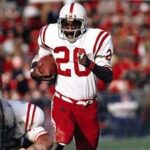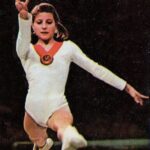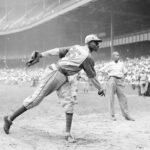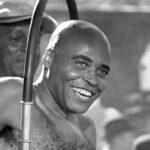Rocky Colavito: Super Slugger
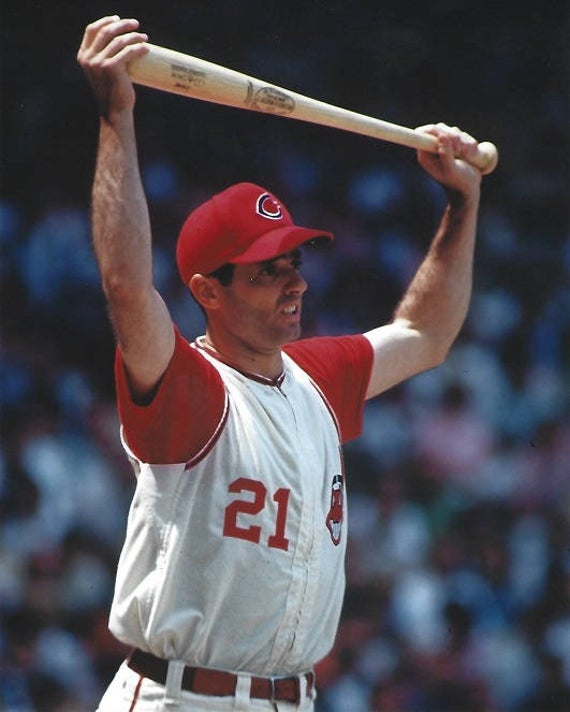
The Sports Then and Now Vintage Athlete of the Month was just the fifth player in Major League Baseball history to have 11 straight seasons with 20 or more home runs, yet could not sustain that greatness long enough to earn a spot in the Baseball Hall of Fame.
In some sense, the legend of Rocco “Rocky” Colavito Jr. began long before he ever started pounding home runs at the major league level.
Born and raised as a New York Yankees fan in The Bronx, Colavito was playing semipro baseball before he was a teenager and dropped out of high school at 16 after his sophomore year to pursue a professional career. The major league rule at the time said a player could not sign with a pro team until his high school class graduated, but after sitting out for one year, Colavito was allowed to sign at age 17.
After the Yankees showed little interest during a tryout at Yankee Stadium, the Cleveland Indians signed him as an undrafted amateur at the age of 17 on January 1, 1951. By the 1954 season, Colavito was one of the top sluggers in minor league baseball as he blasted 38 home runs and drove home 116 for the Indianapolis Indians.
He made his major league debut in September 1955 at the age of 22 and hit .444 with two doubles in five games. The next season he started in the minors, but soon earned a permanent spot on the major league roster.
Despite playing in only 101 games, Colavito hit 21 home runs with 65 RBI and a .276 batting average to finish second in the Rookie of the Year voting behind shortstop Luis Aparicio of the Chicago White Sox.
After hitting 25 home runs the next season, Colavito emerged as one of the top sluggers in the game in 1958. He finished second in the American League with 41 home runs and led the league with a .620 slugging percentage to finish third in the AL MVP voting.
In 1959 Colavito made the American League All-Star team for the first time on his way to sharing the American League home run lead with Harmon Killebrew as they each blasted 42 home runs. He became the first player in Indians history with consecutive 40 home run seasons and finished one short of the team record. He also joined Lou Gehrig as the only players in baseball history to hit four home runs in a single game when he knocked four balls over the fence at Memorial Stadium in Baltimore.
Though he was a fan favorite and top slugger for the Indians, Colavito was surprisingly traded to Detroit just before the start of the 1960 season in a blockbuster trade that sent 1969 American League batting champion Harvey Kuenn. The trade was unpopular among Cleveland fans from the beginning and the fact that Kuenn was injured for part of the season and then traded to the San Francisco Giants after the year didn’t help.
While on paper the trade looked to be much better for Detroit, their fans were not as enamored with Colavito as had been the fans in Cleveland. Colavito blasted 35 home runs and drove home 87 for the Tigers, but his batting average was more than 100 points below the average Kuenn had posted the previous season.
In 1961 Colavito posted career-high numbers with 45 home runs and 140 RBI while batting .290. Colavito was selected to play in both All-Star games in 1961 and had a home run in the second game.
Over the next two years, Colavito continued to be one of the top sluggers in the game, but he struggled to gain the admiration of the fans and media in Detroit. In 1962 he hit 37 home runs and drove home 112. The next year his numbers fell slightly to 22 home runs and 91 RBI.
Detroit sportswriter Joe Falls was not a fan of Colavito and during his time with the Tigers kept a stat of runs not batted in (RNBI) by the slugger. Colavito’s popularity sunk lower prior to the 1962 season when he held out for a higher salary and eventually was paid more than the Tigers most popular player and greatest star Al Kaline.
After a (no pun intended) rocky tenure in Detroit, Colavito was traded to the Kansas Citty A’s prior to the 1964 season. He played only one year with the A’s, but continued his string of 20+ home run seasons by blasting 34 home runs and driving in 102 runs.
In January 1965, Colavito returned to Cleveland as part of the three-team trade. He gave the fans early dividends by hitting a two-run home run in his first home game back in Cleveland and finished the year as the RBI leader in the American League with 108. He finished fifth in the MVP voting, the fourth time he placed in the top 10 and third in the top 5, while hitting 26 home runs, leading the league in base on balls and becoming the first American League outfielder to finish the season with a perfect fielding percentage.
He was named an All-Star for the sixth time in 1966 as he hit 30 home runs to mark the seventh time he had posted 30 or more and 11 straight year with more than 20 home runs. He also eclipsed the 350 career home run mark during the season.
Though he was only 33 at the start of the 1967 season and had been one of the steadiest power hitters in baseball for over a decade, Colavito experienced a sudden and rapid decline. He hit only 5 home runs in 63 games with the Indians before being traded to the Chicago White Sox, for whom he hit only three home runs in 60 games.
Colavito moved to the National League for the first time in his career to start the 1968 season with the Los Angeles Dodgers. After hitting .204 with three home runs in 40 games with the Dodgers, he was released in early July.
Soon after, his career came full circle as Colavito was signed by the favorite team of his youth, the New York Yankees. Though he hit only five home runs in 39 games with the Yankees, he did have a memorable moment for New York.
On August 25, 1968, the now 35 year old Colavito pitched two and two-third innings of scoreless relief against his former teammates from Detroit to earn the pitching victory. It would not be until 2000 that another position player earned a regular season victory and not until 2012 that it would happen again in the American League.
Colavito completed his career with 374 career home runs (currently 79th in baseball history), 1,159 RBI and a .266 career batting average.
Over the years, some have talked about Colavito as being deserving of a spot in the Baseball Hall of Fame. Certainly, for 11 seasons he was among the top players in the game, averaging more than 30 home runs per year for over a decade. However, his quick decline kept Colavito from reaching some of the milestone career numbers that might have written his ticket into the Hall of Fame. He was on the Hall of Fame ballot only twice, receiving two votes in 1974 and one in 1975.
Following his retirement, Colavito worked as a broadcaster and as a coach. In 2015, his right leg was amputated below the knee due to complications from diabetes.
